
13.09.2018
by Leonel Alfonso Juracán, Guatemala City, Guatemala
August 16, 2018 – September 16, 2018
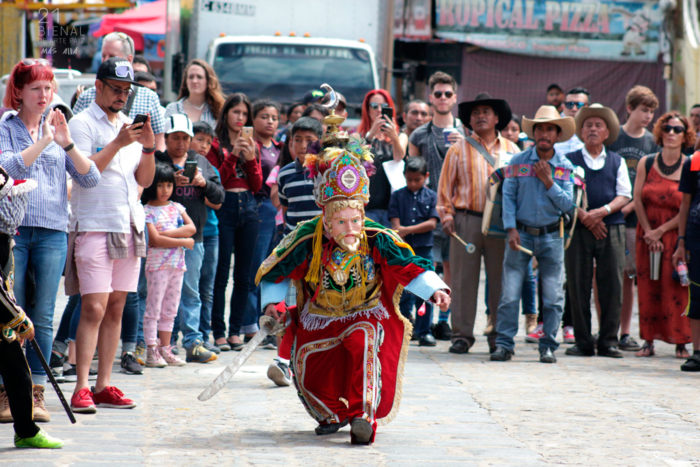
Approach to the “Beyond”
a) Let us start with the crisis
To hold a biennial of visual arts in one of the most unequal, corrupt, and illiterate countries of the Americas is not an easy task. And if the Paiz Foundation deserves some credit, it consists of bringing together for more than forty years’ gallery owners, artists, and curators from Central America along with their counterparts from other parts of the world in a dialogue which facilitates the recognition of local artists, as well as learning about the workings and different forms of interaction in the international art market.
The isolation which prevailed throughout Guatemala and, in general, the entirety of Central America due to the Cold War, with its tragic downfall of dictatorships, armed insurrections, and thousands of innocent victims, still looms over the economy, the education system, but above all, in the idiosyncrasies of its people. Postmodernity invaded our lives, perpetuating colonialism in which we our trapped. In this way, for new generations, the Internet arrived before primary school, transnational franchises before agricultural technology, and bank mergers before a relevant legislation.
In these circumstances, to run any art-related event involves confronting these contradictions, opening spaces for discussion, education, and exchange, more than just expositions. It involves accepting beforehand that it will not be able to fulfil all the expectations, that the original proposals will change along the way, and given the extent of our scarcities, there will always be financial difficulties.
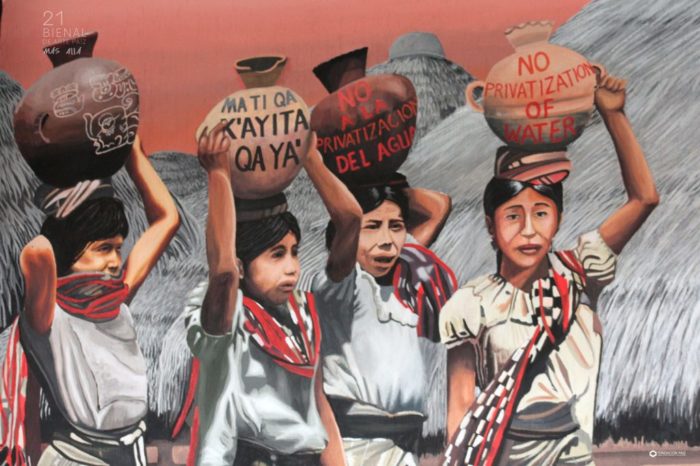
This has been understood by the organisers of the Paiz biennial, which went from being a small contest, aimed at encouraging the national Guatemalan awareness in the 1980s, to an exhibition that encompasses both galleries and public spaces retaining a regional character along with a curatorial script. Of course this process has not taken place without disputes: the reduction in the number of exhibitors during the 1990s left out many up-and-coming artists who resented the lack of support; and the incorporation of contemporary art techniques at the beginning of this century received negative criticism, both from the general public and artists accustomed to traditional techniques.
By 2010, the biennial was already starting to show signs of exhaustion. Works of the invited artists were not understood by the public, and pieces created by local artists had been reduced to a small group of award-winning individuals from previous events.
Ultimately, we all understood that the situation was due to causes that exceeded the capacities of any institution dedicated to the dissemination of art: The Escuela Nacional de Artes Plásticas is situated, for the past sixteen years and still to the present day. In complete abandonment, public education was prioritizing technical careers, disregarding the humanities, and the first effects of the Free Trade Agreement with EUA had damaged local producers and exporters.
Santiago Olmo, the main curator of the biennial during the year 2012, conscious of the outlook that it was presenting, focused more on the social process of each artist whilst producing their work rather than the final result of exposing, further aggravating the nuisances and questioning: Had traditional art lot its value? What could be the ethical stance of an artist that undertakes social work, if at the end he sells the documentation of the process as his own work? What form should art adopt for our region?
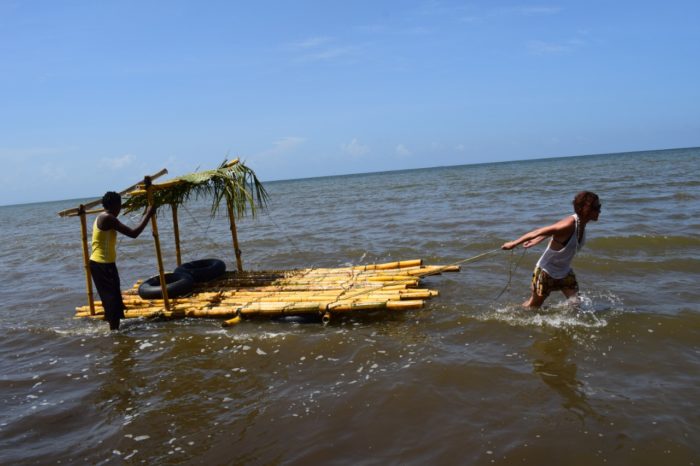
b) Towards a different way of looking
Although the questions formed since 2012 cannot have unanimous solutions, and far from being resolved, the institutional crisis and politics has increased throughout the region, discussions have helped us to discover the multiple interstices of aesthetics. Political activism has been incorporated into the gallery—just as it occurred in the European post war period of the 1960s—, spaces have opened for a dialogue with indigenous art, perhaps still not a sufficient amount, not from a folkloric perspective, and it has attempted to outline a concept of Latin American postmodernity, from the borders of the global village.
Examples of this can be seen with the Bandera Negra (Black Flag), installed by Regina Galindo in the Plaza of the Guatemalan Constitution during the 2015 demonstrations after being installed in Mexico City at Museo Ex-Teresa; the “invisible performances” made by Benvenuto Chavajay on the original peoples daily life within the city, or the transformation of Kakchiquelclothing and recovery of the language under the same name evidenced by the work of Marylin Boror. Concepts such as “decoloniality”, “neoteric culture” or the evocation of the name “Abya Yala” for the entire Caribbean and Mesoamerican region, are on test through discussions promoted not only in centralized institutions of the capital, but also within artistic groups and cultural centers in the interior.
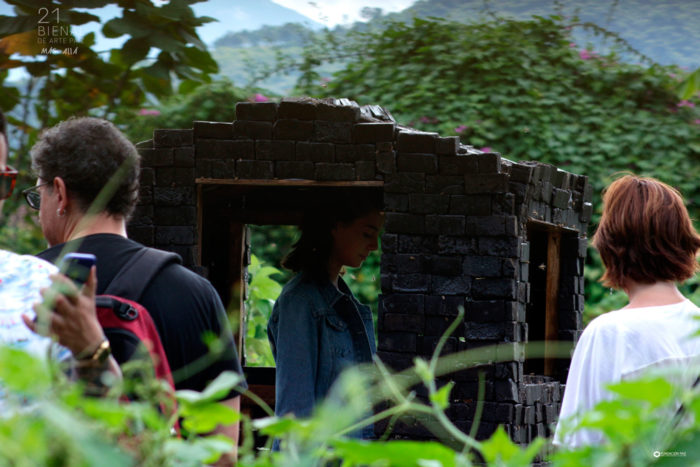
Of course, the scene couldn’t be more unfavourable for us, and the general perception is that during the current Biennial fewer works have been exhibited than in previous years. This is due, to a large extent, to the fact that many of the exhibitions used platforms that already existed in social activism, without the final proposal going beyond the conventional forms. Once again we have seen the photographs of the 3,000 registered people as disappeared during the internal armed conflict, whilst just two months before, in San Juan Comalapa (a town that also became part of the run of exhibitions “inwards” of the biennial this year), returned to bury 98 unidentified bodies, and the population found out that the number of clandestine graves was at least three times more than the amount investigated to date.
Addressing the economic and social inequalities, even with the good intentions and engagement of artists such as Jesús Negrón, Magdalena Atria and Ricardo Lanzarini, didn’t ditch the common cliché of running drawing, painting and art workshops in marginalised areas of the Guatemalan capital, whose images of neglect and poverty have already been amply exploited by NGOs, newspapers, and film producers.
The violence of gender, a topic that in previous years has been approached from a more psychological perspective, had on this occasion fewer participants, even though the fatal cases have increased at an alarming rate. Perhaps the box of denunciations installed by Tania Bruguera inside the University of San Carlos, or the photographs of Lyndsie Price about the western normativity of the feminine body help to demonstrate less visible forms of this violence, although, the rise of its most brutal forms requires a different approach.
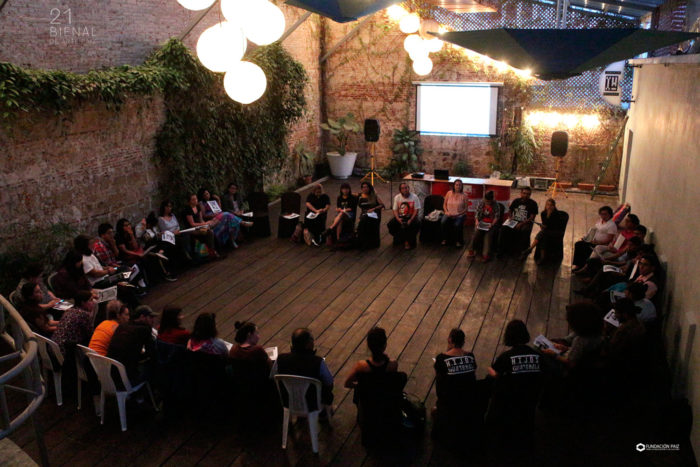
c) Exoticism and demystication
Since the 1990s, original people artists have had a bigger presence in the Guatemalan art scene, rebelling against the folklorizing visions, and exhibiting works increasingly further removed from the ‘primitivist’ art, not conforming themselves with filling a space in biennials and international expositions, but rather returning to their communities in order to develop educational projects and contribute in this manner to their development.
In line with this feeling, Gerardo Mosquera, the general curator of this year’s biennial, decided to broaden the spectrum of the exhibitions, including organisations and community projects from other regions: Rabinal, Xelajú, San Juan Comalapa, Livingston, Sumpango and San Pedro la Laguna. To go ‘beyond’ the quasi-religious concept of art—in order to get closer to the people in an exchange capable of generating social awareness. The artists who were invited held discussions and workshops with the residents of the communities and left an artwork created as a group; sometimes, of a permanent nature, whilst others, more ephemeral.
The response was not entirely favourable, given that, independently from the biennial, each community has run their projects for years, and it didn’t seem to everyone that the external intervention was useful on both sides. Can one really call these type of actions decolonializing? Will we not be ultimately assisting a new form of colonization? Whatever happens, the astonishment is mutual, just as the invited artist can be surprised when confronted with a reality that is foreign to them. Also, the locals perceive the recent arrival as an “exotic agent”. The difference between cultural tourism and cohabitation basically depends on the openness of every part involved.
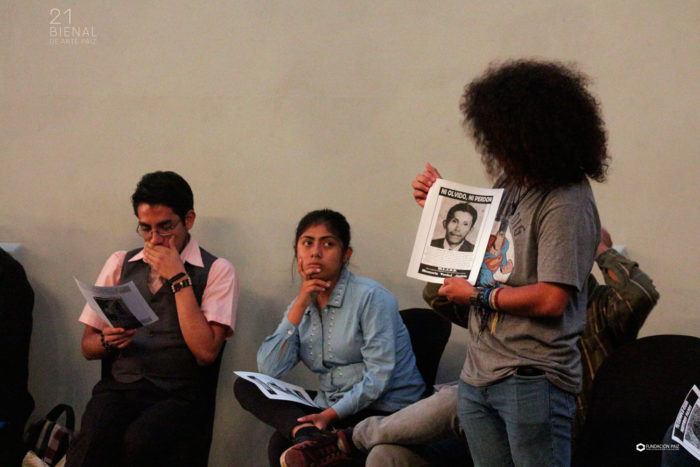
The expositions that took place in Mexico and Panama cannot be accessed, but in my opinion, the one which gained the most acceptance was the montage in the old post office building in Guatemala City.
This exhibition in particular acquired meaning in Guatemalan eyes due to our recent history: Alfredo Ceibal’s drawings illustrated natural disasters and their various causes; the bills and bottles intervened by Cildo Meireles evoked the union struggle against the Coca Cola bottling plant, as well as the issuance of counterfeit money during the 1980s. In the “border crossing” of the Chinese artist Zu Xhen we could see a reflection of our territorial disagreement with Belize; the “champas” shaped like a space capsule by Simón Vega presented us with a tragicomic alternative to the problem of urban immigration. The glitch art of Bryan Castro, inviting the public to scratch on works and photos of the artists in electronic pages of the Biennial. Or the interactive installation of Ricardo Lanzarini, objected to by gallery owners due to his “in situ” cartoons of Guatemalan President Jimmy Morales, all of which helped to desacralize the gallery, without appealing to the academic bombast of previous years.
—
Leonel Alfonso Juracán is a clinic lab technician, artist and philosopher based in Guatemala.
Comments
There are no coments available.